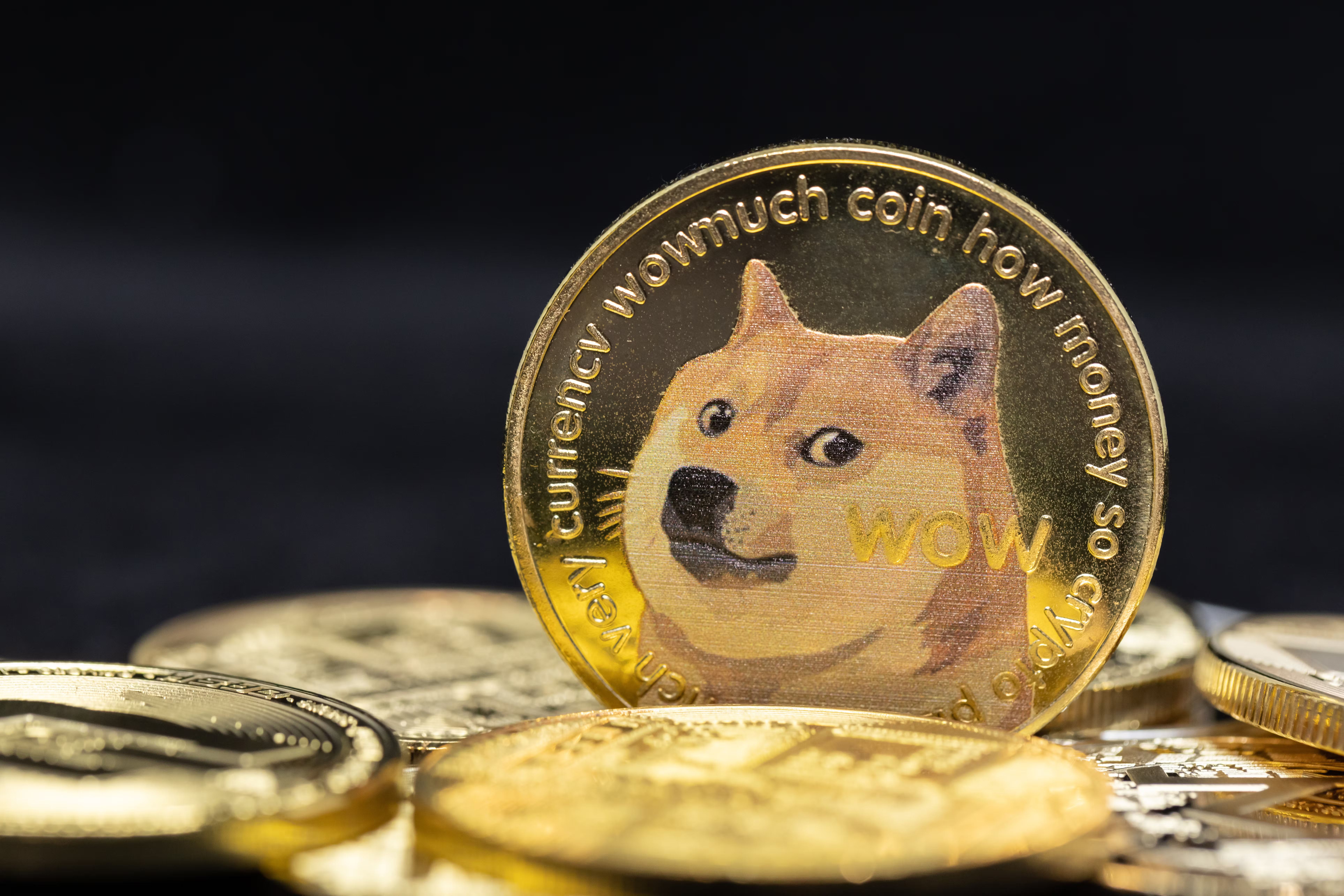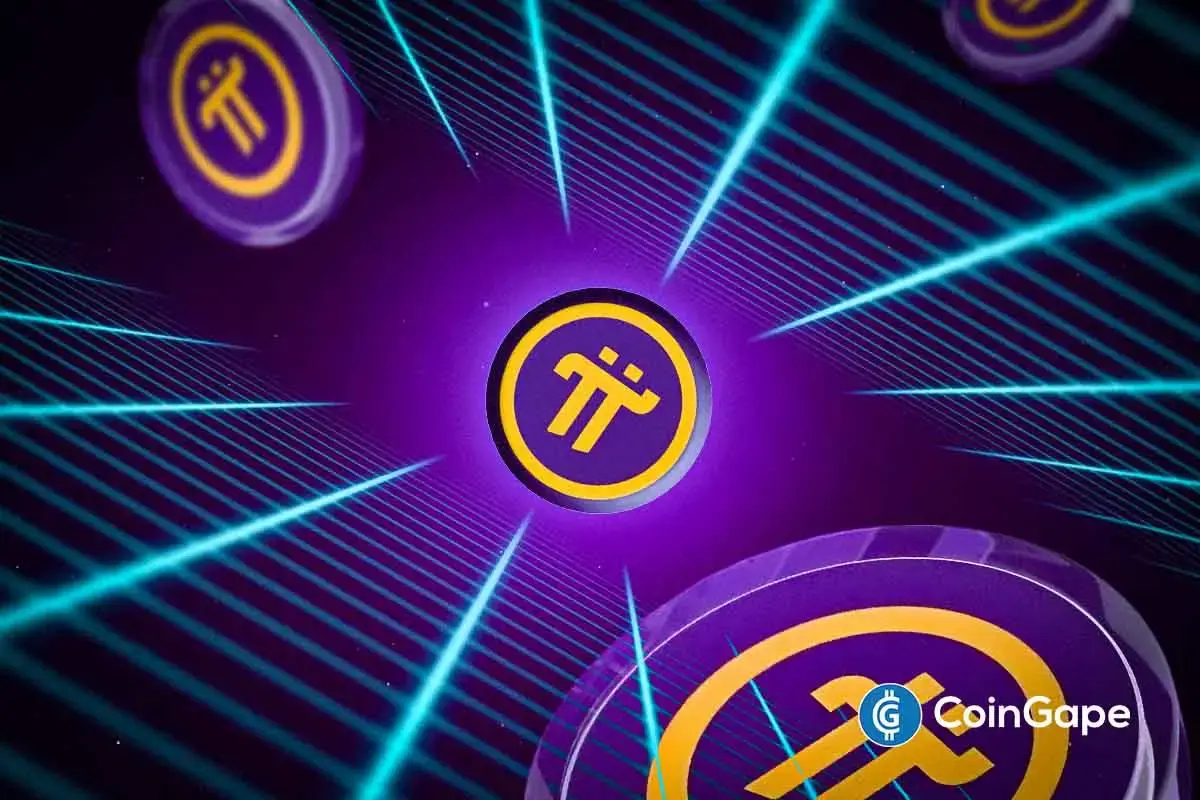Market
CZ, Binance Argue SEC Crypto Complaint Lacks Standards


On November 4, lawyers for Binance and its former CEO, Changpeng Zhao (CZ), filed a motion to dismiss the amended complaint filed by the Securities and Exchange Commission (SEC).
This move underscores Binance’s ongoing efforts to counter regulatory pressure amid recent legal challenges, which have highlighted the increasingly strict U.S. regulatory stance on cryptocurrency.
Binance, CZ Fight SEC’s Crypto Rules
In its filing, Binance’s legal team argued that the SEC’s amended complaint refuses to articulate any standard for determining when crypto asset transactions qualify as investment contracts under US securities law.
The lawyers allege that this vagueness leaves market participants unclear about which transactions fall within the scope of securities regulations and which do not. This, in their opinion, ultimately puts the entire crypto industry in regulatory limbo.
“The SEC’s amended complaint continues to insist that virtually all transactions involving crypto assets are securities transactions, simply because some buyers might hope the assets will increase in value,” the latest filing stated.
Read more: A Detailed Comparison of Binance vs. Binance.US
According to the lawyers, this stance is inconsistent with previous judicial interpretations. The lawyers contend that the SEC’s approach ignores a court ruling indicating that crypto assets are not automatically considered securities. Specifically, in the SEC versus Ripple case, Judge Analisa Torres determined that XRP was only a security when sold to institutional customers.
Still, the SEC also appealed this decision recently, with the case expected to drag on until July 2025. Using this case as a reference, the legal team asserted that the SEC is failing to accept the “logical conclusion” of that ruling — that transactions in crypto assets, especially secondary market trades long after initial distribution, are not securities transactions.
Binance’s legal team also noted that the SEC dropping claims involving Ethereum (ETH) without explanation points to selective enforcement. They say this further highlights the need for a clear regulatory standard.
“The SEC recently abandoned its claim that transactions involving Ether are investment contracts,” the lawyers wrote.
As BeInCrypto reported, the SEC initially filed its lawsuit against Zhao and Binance entities in June 2023. The regulator accused them of violating US securities laws.
The complaint targeted CZ and Binance entities (BAM Management US Holdings, BAM Trading Services, and Binance Holdings). It was alleged that they had failed to register various activities with the SEC, which had resulted in “unlawful operations.”
An Industry-Wide Trend of Legal Pushback
Binance continues to assert its innocence, arguing that the SEC’s definitions are overly broad and unclear. In July, the SEC amended its complaint against Binance, notably dropping its request for a ruling on Binance’s “Third Party Crypto Asset Securities.” While this move appears to be a calculated effort to bolster the SEC’s case, the revisions have raised additional questions about regulatory standards in the crypto industry.
As the case progresses, the SEC’s approach is likely to affect the future of crypto regulations in the US, especially as it pursues similar claims against other companies. Among them is gaming firm Immutable, which recently received a Wells notice signaling potential enforcement action.
Of note, however, Binance is not alone in its stance against the SEC’s regulatory approach. Other major exchanges have also recently challenged the SEC’s attempts to classify crypto assets as securities.
Kraken, for example, has publicly opposed the agency’s labeling of specific tokens as securities. The exchange argued that the SEC is imposing “arbitrary” standards without clear guidance.
“The SEC has no authority to regulate Kraken’s digital asset trading platform […] because the Digital Assets are not securities or investment contracts,” Kraken said.
Read more: Crypto Regulation: What Are the Benefits and Drawbacks?
The absence of a clear regulatory framework has sparked a wave of lawsuits and enforcement actions, turning the relationship between crypto exchanges and regulators into a legal battleground. Binance’s motion to dismiss the SEC’s complaint highlights a growing assertiveness in the industry, as companies call for clearer guidelines they argue are essential for operating in compliance with US laws.
Disclaimer
In adherence to the Trust Project guidelines, BeInCrypto is committed to unbiased, transparent reporting. This news article aims to provide accurate, timely information. However, readers are advised to verify facts independently and consult with a professional before making any decisions based on this content. Please note that our Terms and Conditions, Privacy Policy, and Disclaimers have been updated.
Market
Onyxcoin (XCN) Shows Reversal Signs After 200% Rally

Onyxcoin (XCN) is down nearly 10% over the past seven days, cooling off after a sharp 200% rally between April 9 and April 11. Momentum indicators suggest that the bullish trend may be losing strength, with both the RSI and ADX showing signs of fading conviction.
While XCN’s EMA lines remain in a bullish formation, early signs of a potential reversal are emerging as short-term averages begin to slope downward. The coming days will be key in determining whether Onyxcoin can stabilize and resume its climb—or if a deeper correction is on the horizon.
Onyxcoin Shows Early Signs of Stabilization, but Momentum Remains Uncertain
Onyxcoin’s Relative Strength Index (RSI) is currently sitting at 43. Readings above 70 typically indicate that an asset is overbought and could be due for a pullback, while readings below 30 suggest it may be oversold and poised for a potential rebound.
Levels between 30 and 70 are considered neutral, often reflecting consolidation or indecision in the market.

XCN’s RSI signals a neutral state but shows signs of gradual recovery. While not yet a clear bullish signal, yesterday’s upward move suggests that bearish momentum may be easing.
However, the fact that RSI failed to hit above 50 reflects lingering uncertainty and a lack of sustained buying pressure.
For now, XCN appears to be in a wait-and-see phase, where a continued climb in RSI could signal a shift toward renewed upside, but any further weakness might keep the price trapped in a consolidation range.
XCN Uptrend Weakens as ADX Signals Fading Momentum
Onyxcoin’s Average Directional Index (ADX) has declined to 11, down from 13.92 yesterday and 15.26 two days ago. This decline reflects a consistent weakening in trend strength.
The ADX is a key component of the Directional Movement Index (DMI) and is used to measure the strength—not the direction—of a trend on a scale from 0 to 100.
Values below 20 typically suggest that the market is trending weakly or not at all, while readings above 25 confirm a strong and established trend.

With the ADX now at 11, Onyxcoin’s trend is losing momentum, even though it technically remains in an uptrend. This low reading suggests the current bullish phase is fragile and may lack the conviction needed for sustained upward movement.
Combined with EMA lines that are beginning to flatten, the weakening ADX adds weight to the possibility that the trend could soon shift or stall.
If no surge in buying pressure emerges to reinforce the uptrend, XCN may enter a period of sideways movement or even a reversal in the short term.
Onyxcoin at a Crossroads as EMA Lines Hint at Possible Trend Reversal
XCN EMA lines remain bullish for now, with short-term averages still positioned above long-term ones.
However, the short-term EMAs have started to slope downward, raising the possibility of a looming death cross—a bearish crossover in which the short-term average falls below the long-term average.
If this crossover materializes, it would signal a shift in trend direction and could trigger a deeper pullback, after a 200% rally between April 9 and April 11, making it one of the best-performing altcoins of the previous weeks.
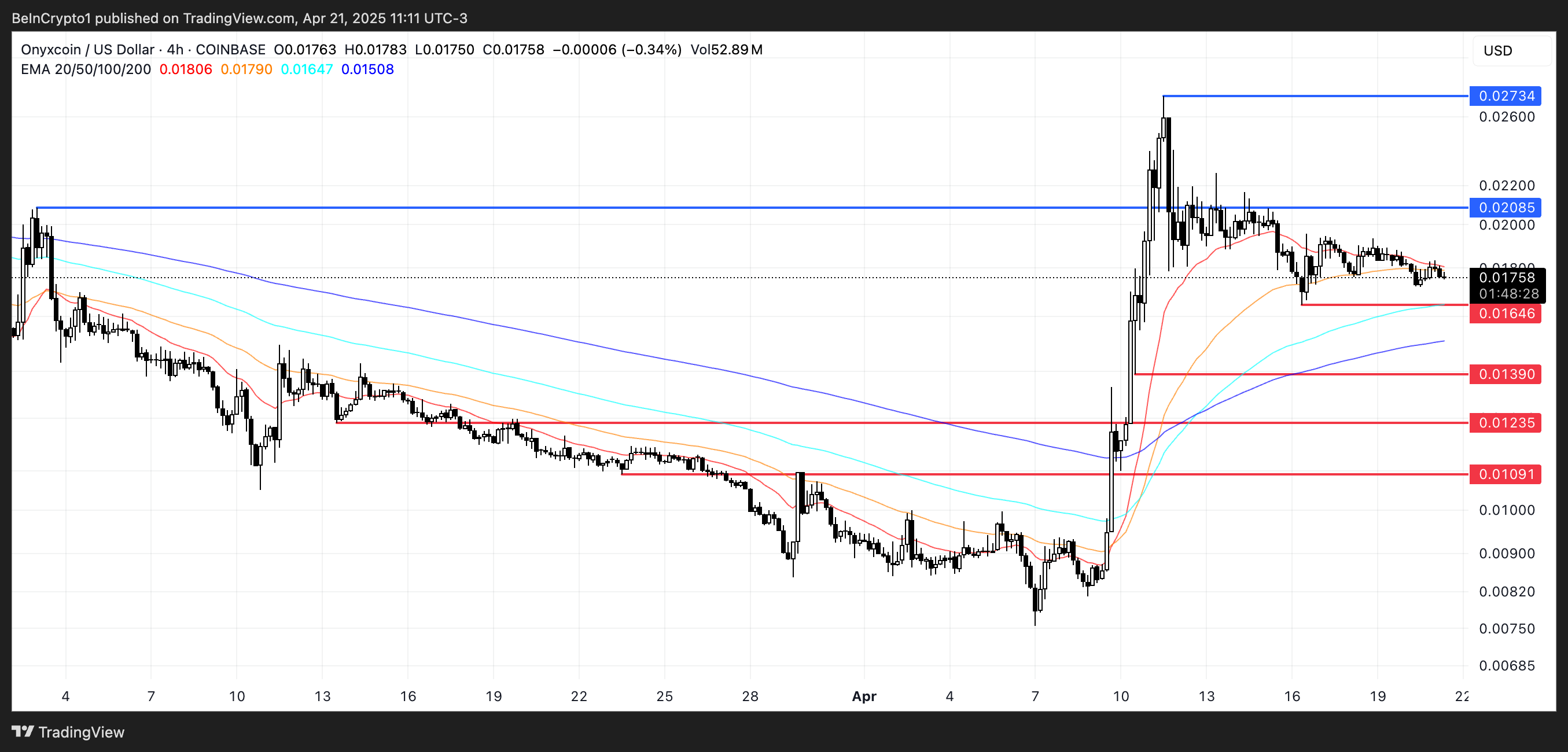
Key support levels to watch are $0.016, followed by $0.0139 and $0.0123. If bearish momentum accelerates, XCN could drop as low as $0.0109, marking a potential 38% correction from current levels.
On the flip side, if bulls manage to regain control and reinforce the existing uptrend, XCN could challenge the resistance at $0.020.
A breakout above that level would open the door for a potential rally toward $0.027, representing a 55% upside.
Disclaimer
In line with the Trust Project guidelines, this price analysis article is for informational purposes only and should not be considered financial or investment advice. BeInCrypto is committed to accurate, unbiased reporting, but market conditions are subject to change without notice. Always conduct your own research and consult with a professional before making any financial decisions. Please note that our Terms and Conditions, Privacy Policy, and Disclaimers have been updated.
Market
3 Altcoins to Watch in the Fourth Week of April 2025

The crypto market has shown consistent growth over the past few days, helping altcoins alongside Bitcoin to recover. However, relying solely on broader market cues or momentum will not sustain price growth.
BeInCrypto has analyzed three altcoins for investors to watch in April, as important developments are set to unfold this week.
Tutorial (TUT)
TUT price has remained stable throughout most of the month, currently hovering below the $0.027 resistance level. Successfully breaching this barrier is crucial for recovering the 53% losses incurred in March. A price rise above $0.027 could signal a positive trend and further upward movement in the coming weeks.
If this trend continues, TUT could push toward the next resistance level of $0.039, indicating strong momentum.
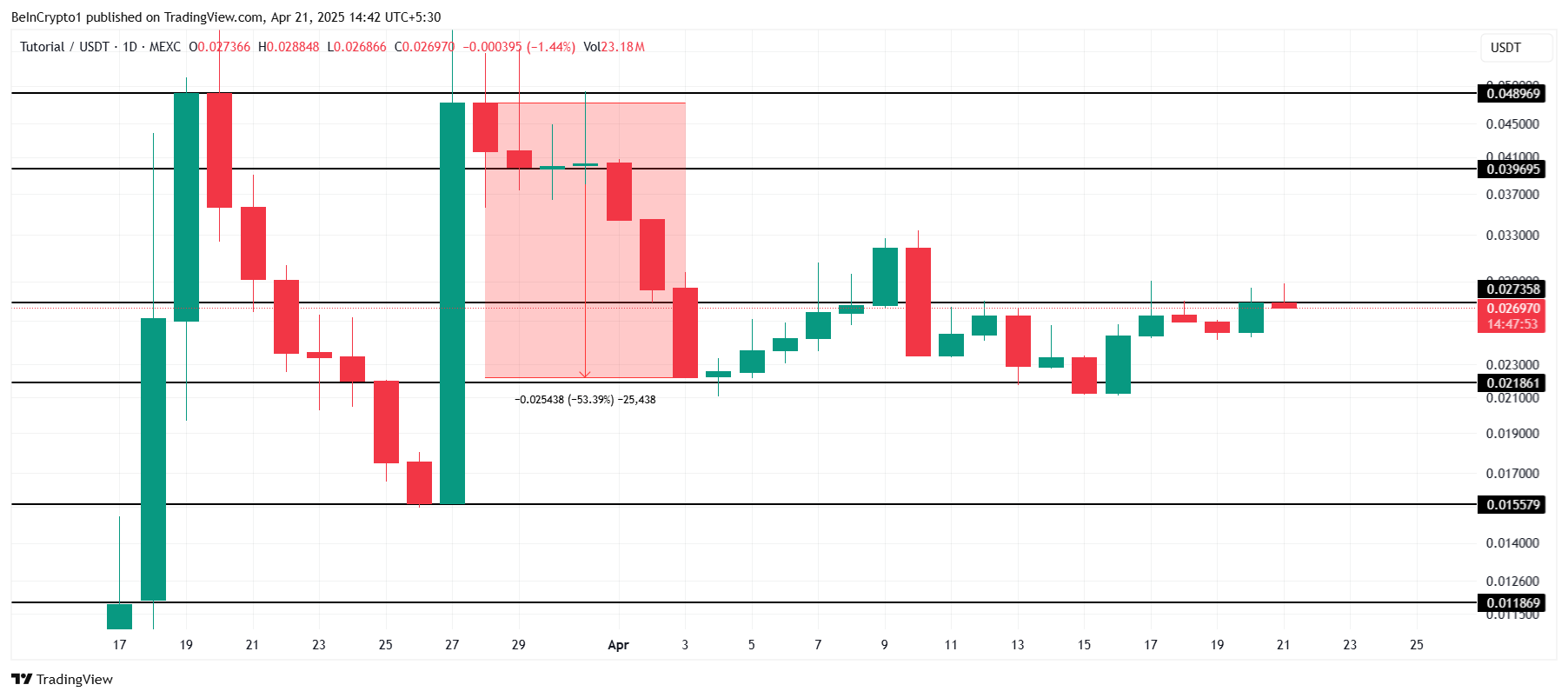
However, if TUT fails to break above the $0.027 resistance, the price could decline below $0.021. Such a drop would likely invalidate the bullish outlook and lead to further losses. In that scenario, the altcoin’s price might fall to $0.015, a significant setback for the token’s recovery.
Injective (INJ)
Injective’s price has surged by 17% in recent days, fueled by anticipation surrounding the upcoming Lyota Mainnet Upgrade. Set to go live on April 22, the upgrade is expected to enhance Injective’s infrastructure, performance, and transaction speeds. This has sparked optimism, driving the price higher in the short term.
Currently trading at $8.97, Injective is nearing the $9.11 resistance level. If it successfully breaches this barrier, the price could move beyond $10.00, potentially reaching $10.35. The positive sentiment surrounding the Lyota Mainnet Upgrade is likely to continue driving the token’s growth if it can surpass these levels.
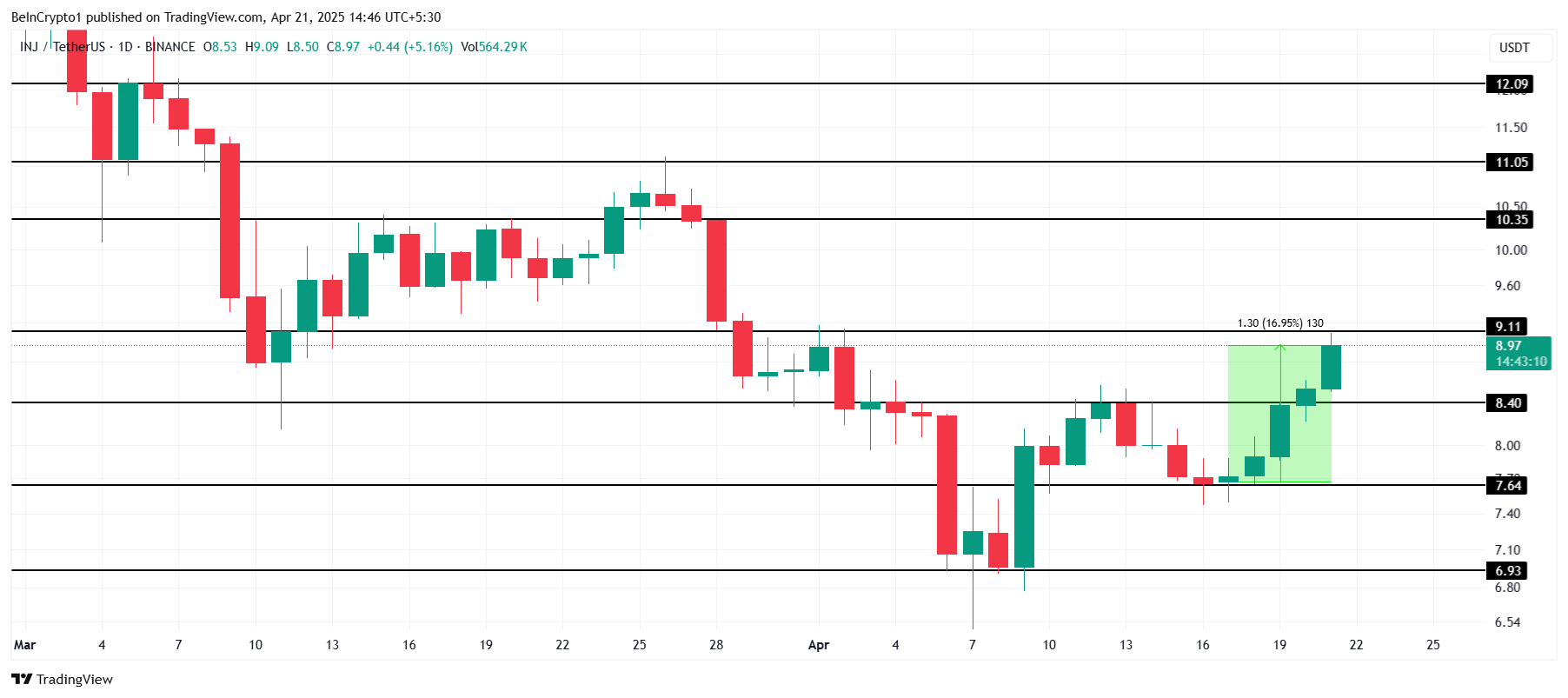
However, if Injective fails to break through the $9.11 resistance, as seen earlier in April, the price could fall below $8.40. This would signal a retreat and could see the token dip to $7.64, invalidating the bullish outlook and erasing recent gains.
BNB
BNB’s price currently stands at $604, experiencing a two-month downtrend. The altcoin is struggling to breach the resistance of $611. To push past this barrier, BNB needs strong support from the broader market or upcoming developments that could provide a catalyst for price movement and reversal.
One potential catalyst is the Lorentz opBNB mainnet hard fork, which is scheduled for today. The hard fork aims to enhance the chain’s speed and responsiveness. If successful, this could help BNB break the $611 resistance and push the price toward the next level of $647, spurring bullish sentiment.

However, if the hard fork’s impact fails to meet expectations, BNB could struggle to maintain upward momentum. In this case, the price may slip below the support of $576, potentially falling as low as $550. This would invalidate the current bullish outlook and likely continue the downtrend.
Disclaimer
In line with the Trust Project guidelines, this price analysis article is for informational purposes only and should not be considered financial or investment advice. BeInCrypto is committed to accurate, unbiased reporting, but market conditions are subject to change without notice. Always conduct your own research and consult with a professional before making any financial decisions. Please note that our Terms and Conditions, Privacy Policy, and Disclaimers have been updated.
Market
How Will it Impact OM Price?

MANTRA CEO, JP Mullin, is burning 150 million OM tokens from his own allocation and engaging other ecosystem partners to burn an additional 150 million tokens. This 300 million OM token burn aims to restore investor trust in the project and stabilize the altcoin’s price dynamics.
OM is attempting to recover from one of the most dramatic crashes in recent crypto history. On April 13, it lost over 90% of its value in a single hour. The collapse, which erased more than $5.5 billion in market cap, triggered widespread accusations of insider activity and manipulation within the Real-World Assets (RWA) sector.
Understanding MANTRA’s Token Burn
Mantra, once one of the biggest players in the Real-World Assets (RWA) sector, suffered a dramatic collapse on April 13, with its token crashing over 90% in less than an hour and wiping out more than $5.5 billion in market capitalization.
The plunge followed a rapid surge earlier this year, when OM rose from $0.013 to over $6, pushing its fully diluted valuation to $11 billion. The crash was reportedly triggered by a $40 million token deposit into OKX by a wallet allegedly linked to the team, sparking fears of insider selling.
Panic spread quickly as rumors of undisclosed OTC deals, delayed airdrops, and excessive token supply concentration fueled mass liquidations across exchanges.
Despite co-founder John Patrick Mullin denying any wrongdoing and blaming centralized exchanges for forced closures, investors and analysts raised concerns about potential manipulation by market makers and CEXs, drawing comparisons to past collapses like Terra LUNA.

In an effort to rebuild trust, Mullin has announced the permanent burn of his 150 million OM team allocation. The tokens, originally staked at mainnet launch in October 2024, are now being unbonded and will be fully burned by April 29, reducing OM’s total supply from 1.82 billion to 1.67 billion.
This move also lowers the network’s staked amount by 150 million tokens, which could impact on-chain staking APR.
Additionally, MANTRA is in talks with partners to implement a second 150 million OM burn, potentially cutting the total supply by 300 million tokens.
OM Price Faces Critical Test as Token Burn Battles Lingering Market Doubt
Despite MANTRA’s ongoing token burn efforts, it’s still uncertain whether the move will be enough to fully restore investor confidence in OM.
From a technical standpoint, if momentum begins to recover, OM could test the immediate resistance at $0.59. A successful breakout at that level may pave the way for further gains toward $0.71, with additional key hurdles at $0.89 and $0.997 standing between the token and a return to the psychologically important $1 mark.
However, reclaiming these levels will likely require sustained buying interest and broader sentiment recovery across the Real-World Assets (RWA) sector.

On the downside, if the token burn fails to shift sentiment or if selling pressure continues, OM risks resuming its decline.
The first key support lies at $0.51, and a breakdown below that level could send the price further down to $0.469.
Given the scale of the recent crash and the lingering distrust among investors, the path to recovery remains fragile—OM now sits at a critical crossroads between a potential rebound and further erosion of its market value.
Disclaimer
In line with the Trust Project guidelines, this price analysis article is for informational purposes only and should not be considered financial or investment advice. BeInCrypto is committed to accurate, unbiased reporting, but market conditions are subject to change without notice. Always conduct your own research and consult with a professional before making any financial decisions. Please note that our Terms and Conditions, Privacy Policy, and Disclaimers have been updated.
-

 Bitcoin14 hours ago
Bitcoin14 hours agoUS Economic Indicators to Watch & Potential Impact on Bitcoin
-

 Bitcoin23 hours ago
Bitcoin23 hours agoBitcoin LTH Selling Pressure Hits Yearly Low — Bull Market Ready For Take Off?
-

 Bitcoin20 hours ago
Bitcoin20 hours agoHere Are The Bitcoin Levels To Watch For The Short Term
-

 Market17 hours ago
Market17 hours agoBitcoin Price Breakout In Progress—Momentum Builds Above Resistance
-
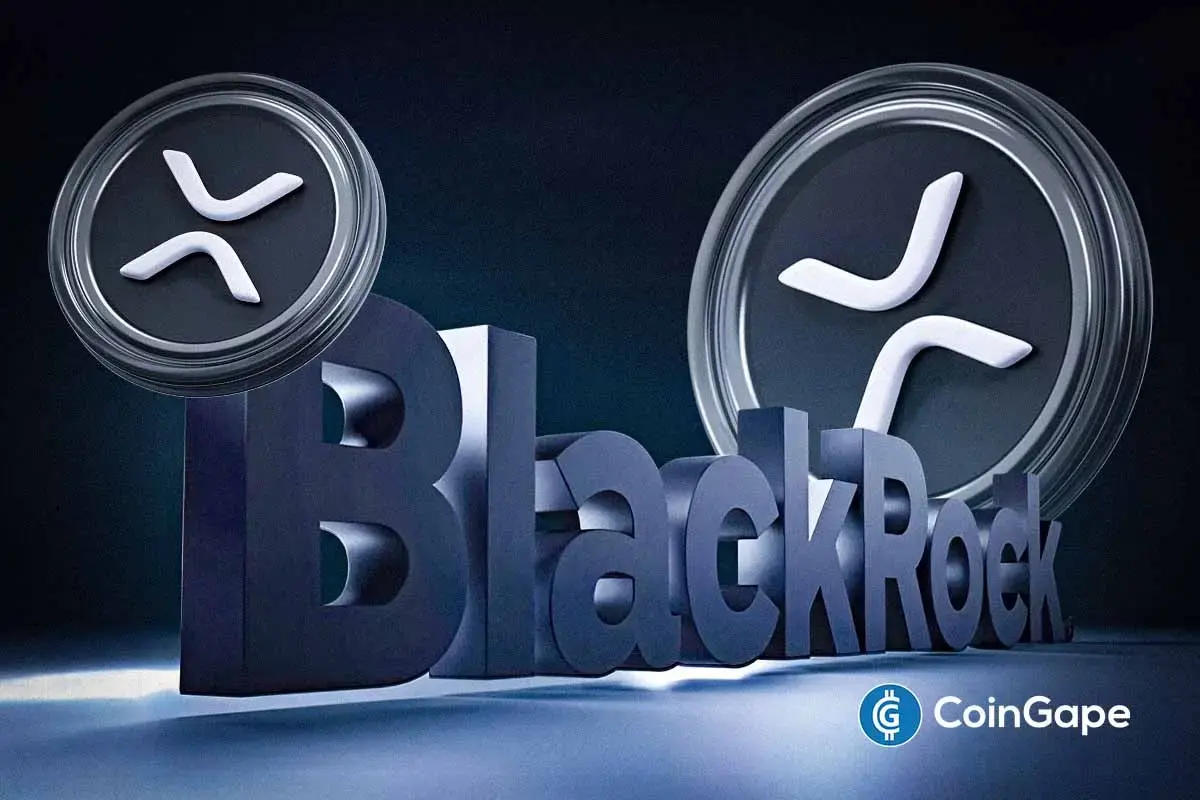
 Altcoin12 hours ago
Altcoin12 hours agoExpert Reveals Why BlackRock Hasn’t Pushed for an XRP ETF
-

 Altcoin17 hours ago
Altcoin17 hours agoExpert Says Solana Price To $2,000 Is Within Reach, Here’s How
-

 Market15 hours ago
Market15 hours agoSolana Rallies Past Bitcoin—Momentum Tilts In Favor of SOL
-

 Market14 hours ago
Market14 hours agoVitalik Buterin Proposes to Replace EVM with RISC-V


